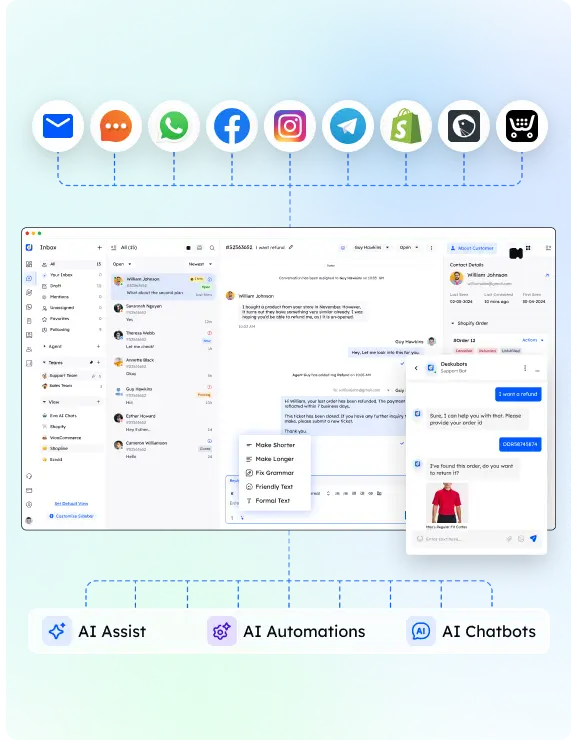Have you ever pondered how to guarantee seamless service delivery and customer satisfaction through a Service-Level Agreement (SLA)?
Understanding the best practices and tips for crafting an effective SLA is crucial to fostering strong relationships with your clients and maintaining operational excellence.
By outlining clear expectations, setting realistic goals, and monitoring performance metrics diligently, you can improve your service standards and stand out in a competitive market.
Look into the intricacies of SLAs and unleash the potential for improved service quality and client trust.
What is a service-level agreement?
When looking into the details of service-level agreements (SLAs), understanding the best practices becomes crucial for effective management.
Key best practices include:
- Creating different SLAs for various ticket severities.
- Setting clear response and resolution timeframes.
- Monitoring performance metrics regularly.
- Establishing realistic SLA goals.
10 Service Level Agreement Best Practices You Should Implement
When implementing service level agreement practices, it is crucial to review all terms carefully to guarantee clarity and alignment with business objectives. Determine priority levels for different outcomes to streamline incident resolution and resource allocation effectively.
Get everyone on the same page by communicating expectations clearly and scheduling regular reviews to assess the effectiveness of your SLAs.
1. Review all terms
Thoroughly reviewing all terms in a service-level agreement is essential to guarantee clarity on services, performance standards, and accountability. When you examine the SLA, make sure you understand the roles and responsibilities of both the service provider and the customer.
Check for specific metrics, penalties for non-compliance, and measurement processes. This review helps identify any ambiguities, discrepancies, or areas for improvement in service delivery. Regular reviews maintain alignment with evolving business needs.
2. Determine priority levels for business outcomes
To effectively prioritize business outcomes in service-level agreements, consider assigning severity levels based on user experience and business impact.
Establish clear communication channels to guarantee timely resolution and alignment with goals.
Define response and resolution times for different types of issues to aid in efficient service delivery and incident management.
Set achievable service level targets aligned with business objectives for effective prioritization of business outcomes.
3. Get everyone on the same page
If you want to guarantee effective alignment and understanding among all stakeholders involved in service-level agreements, establish a collaborative approach to defining and documenting SLA terms and expectations.
Best Practices for Getting Everyone on the Same Page:
- Involve all stakeholders to make sure mutual understanding.
- Set realistic expectations and responsibilities.
- Document SLA metrics and response times clearly.
4. Schedule regular reviews to assess effectiveness
Consider scheduling regular reviews to evaluate the effectiveness of your service-level agreements in meeting set service quality goals. Evaluating performance regularly guarantees alignment with evolving business objectives, allowing adjustments to address customer needs.
Reviewing SLAs helps identify areas for improvement, optimizing service delivery for improved customer satisfaction. Continuous reviews maintain a high level of service quality, guaranteeing your SLAs meet and exceed customer expectations.
5. Be specific
Guarantee clarity in your service level agreements by clearly defining all services and performance metrics to avoid ambiguity.
- Specify measurable goals and targets for each service level.
- Use specific language and quantifiable metrics for achievable expectations.
- Clearly outline consequences for breaches to maintain accountability.
6. Document roles and responsibilities for service delivery
In documenting roles and responsibilities for service delivery in service level agreements, clearly outline the accountabilities of both the service provider and the customer to establish transparent expectations and facilitate effective communication.
Define who’s responsible for specific tasks and deliverables, assign duties based on expertise and availability, and document roles to streamline service delivery and optimize problem resolution.
Confirm all parties understand their responsibilities to prevent misunderstandings and improve service quality.
7. Negotiate conditions
When negotiating conditions for service level agreements, it’s crucial to clearly define the terms to establish mutual understanding and alignment between all parties involved.
- Confirm specific performance metrics and targets are included in the negotiation process.
- Address potential breaches and their consequences upfront for proactive problem resolution.
- Collaborate with stakeholders to establish realistic and achievable service level agreement practices.
8. Define the preferred channels of communication
To improve service delivery efficiency and facilitate effective incident resolution in IT Service Management, it is essential to clearly define the preferred communication channels in the service-level agreement. This entails specifying the use of email, phone, ticketing systems, or collaboration tools for efficient communication. It is crucial to define how critical alerts or escalations should be communicated to guarantee timely responses. Establishing guidelines for using each channel based on issue severity is also paramount. Regularly reviewing and updating these channels to adapt to changing needs enhances the overall communication strategy.
Implementing these measures ensures a structured approach to communication in IT Service Management, ultimately leading to enhanced service delivery and more effective incident resolution.
9.Create realistic goals
Establish the achievable and realistic service level targets within your SLAs to guarantee alignment with business objectives and drive performance effectively.
- Set targets that are attainable and in line with your business goals.
- Assure goals are realistic to accurately measure performance.
- Boost team morale by establishing achievable objectives.
10. Constantly update your levels of agreement
Consider regularly updating your levels of agreement to guarantee they remain relevant and aligned with changing business needs and priorities.
By updating your service level agreement (SLA), you verify that new technologies, services, and performance metrics are incorporated for improved service delivery.
This practice allows adjustments based on customer feedback, helps adapt to industry standards, and demonstrates a commitment to providing high-quality services that meet customer expectations.
What are the types of service-level agreement?
When considering the types of service-level agreements, it’s important to note three key categories:
- Customer Service Level Agreement
- Internal Service Level Agreement
- Multilevel Service Level Agreement
Each type serves a distinct purpose in aligning expectations and optimizing service delivery for various stakeholders.
Understanding these distinctions can help tailor SLAs to specific needs and guarantee efficient resolution of incidents.
1. Customer Service Level Agreement
Customer Service Level Agreements come in different types, tailored to meet specific customer needs and service requirements.
- Customer-based SLAs are personalized for individual customers.
- Service-based SLAs are standard agreements for all customers.
- Multilevel SLAs offer varying levels of customization based on user preferences.
2. Internal Service Level Agreement
Internal Service Level Agreements (SLAs) encompass agreements established between different departments or teams within an organization to define and uphold expected service levels, enhancing operational efficiency and communication.
These internal SLAs set clear expectations and standards for areas like response times, issue resolution, and service quality between internal teams.
3. Multilevel Service Level Agreement
To improve service customization and meet diverse user preferences, Multilevel Service Level Agreements (SLAs) offer tailored solutions through defining varying levels of service.
- Flexibility: Multilevel SLAs allow for adaptable service offerings.
- Targeted Support: Different levels of service cater to specific customer segments.
- Efficiency: Tailored services boost operational efficiency.
How to Make an SLA for Marketing and Sales Alignment
To align marketing and sales effectively in your SLA, there are several key steps you should follow:
- Set up reporting structures for marketing and sales SLAs.
- Segment your goals by specific intervals throughout the year and calculate sales figures against their objectives.
- Establish clear communication channels.
- Incorporate flexibility for adjustments.
1. Set up marketing SLA reporting
Establishing a marketing SLA reporting system is essential for fostering alignment between the marketing and sales teams.
- Track performance metrics to measure success.
- Identify areas for improvement in marketing and sales strategies.
- Optimize collaboration and accountability within the teams.
2. Set up sales SLA reporting
Start by aligning marketing and sales teams through the implementation of sales SLA reporting to define measurable goals and expectations. This process establishes clear metrics for lead generation, conversion rates, and revenue targets.
Sales SLA reporting improves communication and accountability between departments, ensuring both teams work towards shared objectives and KPIs. Regular monitoring and analysis of SLA reports optimize marketing strategies and boost sales performance.
3. Segment your goals by specific intervals during the year
Segmenting your goals by specific intervals throughout the year improves coordination and progress tracking between marketing and sales teams, facilitating targeted adjustments for optimized performance.
- Improves alignment of marketing and sales strategies.
- Allows for timely reviews and adjustments to optimize service performance.
- Enhances communication and collaboration between service providers for shared objectives.
4. Calculate sales’ figures and their goals
To effectively align marketing and sales efforts in creating an SLA for Marketing and Sales Alignment, begin by clearly defining sales figures and corresponding goals. Incorporate measurable metrics like lead generation targets and conversion rates in the SLA.
Establish clear expectations for marketing-generated leads and sales conversion rates to guarantee alignment.
Outline the process for tracking and reporting sales figures to optimize performance based on SLA metrics.
Conclusion
To sum up, implementing best practices for service-level agreements is crucial for ensuring efficient service delivery and customer satisfaction.
By establishing clear expectations, setting achievable goals, and regularly monitoring performance metrics, organizations can achieve operational excellence.
Remember to review all terms carefully and customize SLAs to different ticket severities for best results.
Stay informed, stay proactive, and prioritize effective communication to uphold the commitments outlined in your SLAs.
FAQs
Q1: What is a Service Level Agreement (SLA)?
A Service Level Agreement (SLA) is a formal contract between a service provider and a client that outlines the services to be delivered, performance metrics, responsibilities, and remedies if agreed-upon service levels are not met.
Q2: Why are SLAs important in service contracts?
SLAs ensure accountability by clearly defining expectations for both parties. They provide benchmarks for service performance, create transparency, and protect both the provider and the client in case of disputes.
Q4: How can businesses enforce SLA compliance?
Businesses enforce SLA compliance through regular monitoring, reporting, and using tools to track performance metrics. Penalty clauses for non-compliance, including service credits or refunds, can also encourage adherence to SLA terms.


